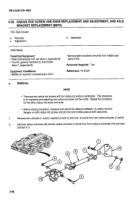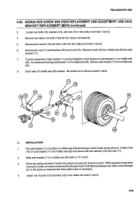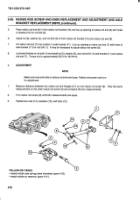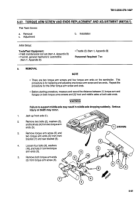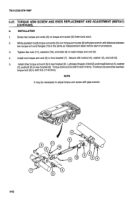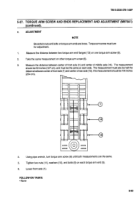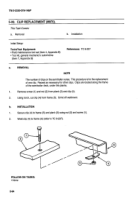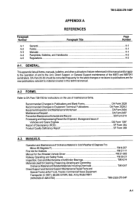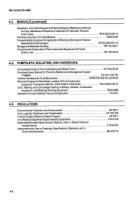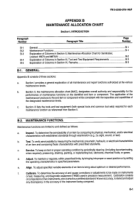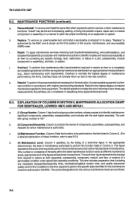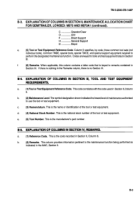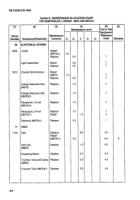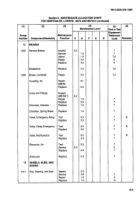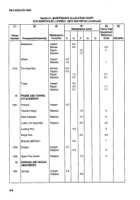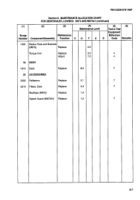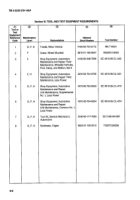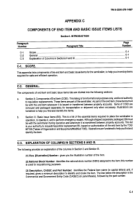TM-5-2330-378-14-P - Page 330 of 524
TM 5-2330-378-14&P
B-2.
MAINTENANCE FUNCTIONS (continued).
9.
Remove/Install.
To removeand
installthesame
itemwhen
requiredto
perform
service
or other
maintenance
functions.
"Install" may be the act of emplacing, seating, orfixing
into position a spare, repair part, or module
(component
or assembly)
in a manner to allow the proper functioning of an equipment or system.
h.
Replace.
To
remove
an unserviceable
item and
install
a serviceable
counterpart
in its place.
"Replace"
is
authorized
by the MAC and is shown as the third position of the source, maintenance,
and recoverability
(SMR) code.
i.
Repair.
To
apply
maintenance
services-including
fault
location/troubleshooting,
removal/installation,
and
disassembly/assemblyprocedures-and
maintenance actions to identify troubles and restore serviceability
to
an item by correcting any specific damage, fault, malfunction, or failure in a part, subassembly, module
(component or assembly), end item, or system.
j.
Overhaul.
To perform
that
maintenance
effort
(service/action)
required
to restore
an item to a completely
serviceable/operational
condition as required by maintenance
standards in an appropriate technical publication
(e.g., depot maintenance work requirement). Overhaul is normally the highest degree of maintenance
performed
by the Army. Overhaul does not normally return an item to like-new condition.
k.
Rebuild.
To perform
those
services/actions
necessary
forthe
restoration
of unserviceable
equipment
to a like-
newcondition
in accordance
with original manufacturing
standards.
Rebuild isthe highestclegree
of materiel
maintenance
applied to Army equipment. The rebuild operation includes the act of returning tozerothoseage
measurements
(hours/miles,
etc.) considered
in classifying Army equipment/components.
B-3. EXPLANATION OF COLUMNS IN SECTION II, MAINTENANCE ALLOCATION CHART
FOR SEMITRAILER, LOWBED: M870 AND M870A1.
a.
(1)
Group
Number.Column
1 listsfunctional
groupcode
numbers,
whosepurpose
isto identify
maintenance-
significant components,
assemblies,
subassemblies,
and modules with the next higher assembly.
The end-
item group number is "00."
b.
(2) ComponentfAssembly.
Column 2 contains the names of components, assemblies,
subassemblies,
and
modules for which maintenance
is authorized.
C.
(3)
Maintenance
Function.
Column
3 lists
the
functions
to be performed
on the
item
listed
in Column
2.
(For
a detailed explanation
of these functions, refer to para B-2.)
d.
(4)
Maintenance
Level.
Column
4 specifies,
by
the
listing
of a work-time
figure
in the
appropriate
subcolumn(s), the level of maintenance authorized to perform the function listed in Column 3. This figure
represents
the active time required to perform that maintenance
function at the indicated level of maintenance.
If the number or complexity
of the tasks within the listed maintenance
function varies at different maintenance
levels, appropriate
work-time figures will be shown foreach level. The work-time figure represents the average
time required to restore an item (assembly, subassembly, component, module, end item, or system) to a
serviceable
condition under typical field operating conditions.
This time includes preparation time (including
any necessary disassembly/assembly time), troubleshooting/fault location time, and quality assurance/
quality control time in addition to the time required to perform the specific tasks identified for the maintenance
functions authorized
in the MAC. The symbol designations
for the various maintenance
levels are as follows:
B-2
Back to Top

